Gentle Reader,
Vitamin D, seems to be the miracle supplement as research turns up more benefits. In my recent travels, along the Inside Passage in Alaska, I worried about the many “round” people from the cruise ships. They may not have gotten a diagnosis of diabetes from their doctor. But they may, like many of us, walk around leading what seems like normal lives with pre-diabetes.
Dr. Steve Chaney describes the condition in his recent newsletter. [To read the whole letter, go to Resources: Diabetes is a deadly scourge.] He says that when we become overweight our tissues become insulin resistant. Initially our pancreas responds by pumping out more insulin to keep our blood sugar levels near normal. It also starts releasing fatty acids into the bloodstream.
At this stage our blood sugar levels are pretty well under control, but our blood levels of insulin and fatty acids are higher than normal. We are asymptomatic for the most part, so many of us never realize that we have a problem.
And lots of us are pre-diabetic!

My grandfather on my mother’s side was diabetic. He was a Swede-Finn, emigrating to New York City in around 1900 and joining the dock builders union. He worked hard, driving piles, helping construct the Brooklyn Bridge and the piers along New York’s maritime harbor. Then he sat down. His knees hurt. His hands hurt. His back hurt. He had arthritis and moving his body hurt. Then he developed diabetes.
My mother was never diagnosed with diabetes. I suspected her of being very close to slipping from pre-diabetic to diabetes in the last 10 years of her life. Her shoulders hurt. Her hands hurt. She had old age arthritis at 55 and began taking Motrin. I remember her and my father both taking drugs for their aches and pains when I was in high school. They both slowed down, walking less and less. She was never diagnosed with diabetes. She died of pancreatic cancer.
This family history is a major driver for me to stay slim and active in spite of major arthritis.
Dr. Chaney points out that there are several published clinical studies showing that lifestyle changes (weight loss, exercise and a healthy diet supplying all of the essential nutrients) can significantly reduce the progression of
pre-diabetes to type 2 diabetes.
Excercise
This is a blog about managing arthritis. See how stiff joints, slowing down, mild and more severe osteo-arthritis, the kind that comes with aging, can be part of the pre-diabetic cluster of conditions? The primary focus of Dr. Chaney’s article is the research about the benefit of Vitamin D on keeping the pancreas healthy. Make no mistake, however, Vitamin D by itself will not prevent diabetes.
Do not let your aches and pains keep you from moving. Keep those joints active to the maximum extent of their flexibility.
Take Vitamin D if you are over weight and suspect you are pre-diabetic. But there is no magic bullet.
I was talking with a young woman today who says she doesn’t want to take pills. I’m all for avoiding medicines if possible. It was a major challenge for me to understand vitamins are food supplements, foodlets, if you will. Yes, they are in pill form. I seldom refer to my vitamins as pills. They are my supplements. I take them to fill in the gaps and to compensate for the sluggish utilization of nutrients that comes with age. We do not make Vitamin D from the sun the way we did when we were 10.
We are going into the winter months when those of us in the north will get less and less sun exposure. Why not supplement with Vitamin D3? Especially if you are little round in the middle. Then, by all means, consider the 180 Turnaround program for losing those extra pounds. You’ll be thrilled with how much easier it is to move with even 10 pounds less to carry around.
To your good health,
Be well, Do well and Keep moving,
Betsy
206 933 1889
PS If you would like to comment or ask a question, please email me at betsy@hihohealth.com. I’ve had too many spammy comments and have limited access to the comment section, but I would still love to hear from you.

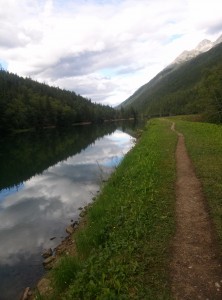
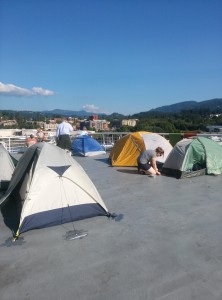
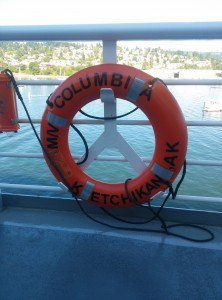
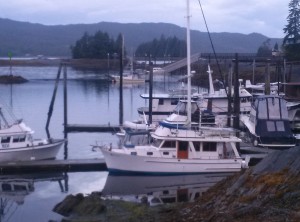

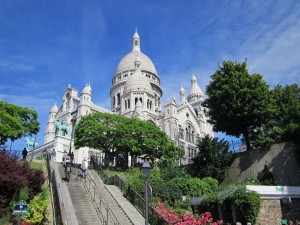

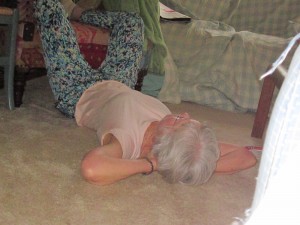

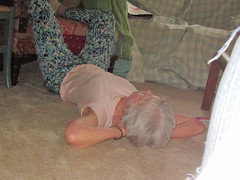 but get too busy at the desk to do them when you get back home. Then suddenly the pain shows up. I do know what to do:
but get too busy at the desk to do them when you get back home. Then suddenly the pain shows up. I do know what to do: Madame Tussaud’s wax museum is a history/pop culture lesson. For her, American giants from George Washington and Lincoln to the Obama’s came alive. For me, she introduced me to the TV stars, singers and comedians who perform today (and I never watch).
Madame Tussaud’s wax museum is a history/pop culture lesson. For her, American giants from George Washington and Lincoln to the Obama’s came alive. For me, she introduced me to the TV stars, singers and comedians who perform today (and I never watch).

 weather was wonderful for strolling. Probably the most exciting thing Ellie did was make a Muppet at FAO Schwartz.
weather was wonderful for strolling. Probably the most exciting thing Ellie did was make a Muppet at FAO Schwartz.
 depicted in Judy Chicago’s famous Dinner Party. On our last day there we went out to Saint John the Devine. Blue-gowned graduates of Columbia Teachers’ College were just leaving the Cathedral and their ceremony. Proud parents and grand parents took pictures as we sat on the steps. Later when I asked Ellie if she would ever come back to New York, she said maybe she’d go there to college.
depicted in Judy Chicago’s famous Dinner Party. On our last day there we went out to Saint John the Devine. Blue-gowned graduates of Columbia Teachers’ College were just leaving the Cathedral and their ceremony. Proud parents and grand parents took pictures as we sat on the steps. Later when I asked Ellie if she would ever come back to New York, she said maybe she’d go there to college.